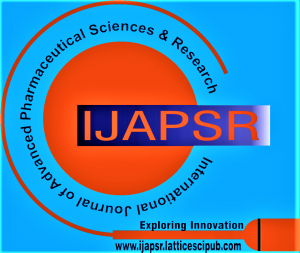![]()
Sepsis Associated Encephalopathy: Pathology, Diagnosis and Therapeutic Interventions
Dharmanka Bandyopadhyay1, Deepak Mishra2
1Dharmanka Bandyopadhyay, Amity Institute of Pharmacy, Amity University Uttar Pradesh, Lucknow Campus, Lucknow (U.P.), India.
2Deepak Mishra, Amity Institute of Pharmacy, Amity University Uttar Pradesh, Lucknow Campus, Lucknow (U.P.), India.
Manuscript received on 25 February 2024 | Revised Manuscript received on 18 March 2024 | Manuscript Accepted on 15 April 2024 | Manuscript published on 30 April 2024 | PP: 42-48 | Volume-4 Issue-3, April 2024 | Retrieval Number: 100.1/ijapsr.E408605050825 | DOI: 10.54105/ijapsr.E4086.04030424
Open Access | Editorial and Publishing Policies | Cite | Zenodo | Indexing and Abstracting
© The Authors. Published by Lattice Science Publication (LSP). This is an open-access article under the CC-BY-NC-ND license (http://creativecommons.org/licenses/by-nc-nd/4.0/)
Abstract: Sepsis, a potentially lethal organ dysfunction caused by dysregulated host response to infection, occurs in more than 30 million patients annually worldwide. Sepsis-associated encephalopathy (SAE) is an early and common complication, manifesting as acute delirium and coma, and often resulting in long-term cognitive dysfunction. This review distils current knowledge of the intricate pathophysiology of sepsis-induced brain dysfunction. The aetiology is multifactorial, resulting from a severe systemic inflammatory response that compromises the blood-brain barrier (BBB) and permits peripheral inflammatory mediators to access the central nervous system. This initiates severe neuroinflammation through microglial and astrocytic activation, accompanied by oxidative stress, resulting in severe mitochondrial dysfunction and a state of “cytopathic hypoxia”. In addition, sepsis causes severe dysregulation of key neurotransmitter systems, including excitotoxic glutamate accumulation and dysfunctional cholinergic transmission, and disrupts hormonal homeostasis via the hypothalamic-pituitaryadrenal (HPA) axis. Despite these elaborate descriptions, diagnostic strategies for SAE remain primarily based on clinical examination, and therapeutic interventions are limited to treating the underlying sepsis. This decision is underpinned by controversy regarding adjunctive treatments, such as corticosteroids and sedation. This review identifies the imperative requirement for specific diagnostic biomarkers and neuroprotective interventions to reduce the high morbidity and mortality of SAE and post-sepsis cognitive dysfunction.
Keywords: Sepsis, Brain, Neuroinflammation, Cognitive Impairment.
Scope of the Article: Pharmacy Practice
